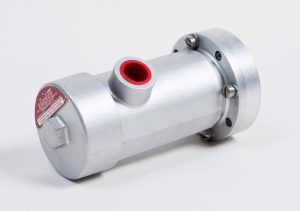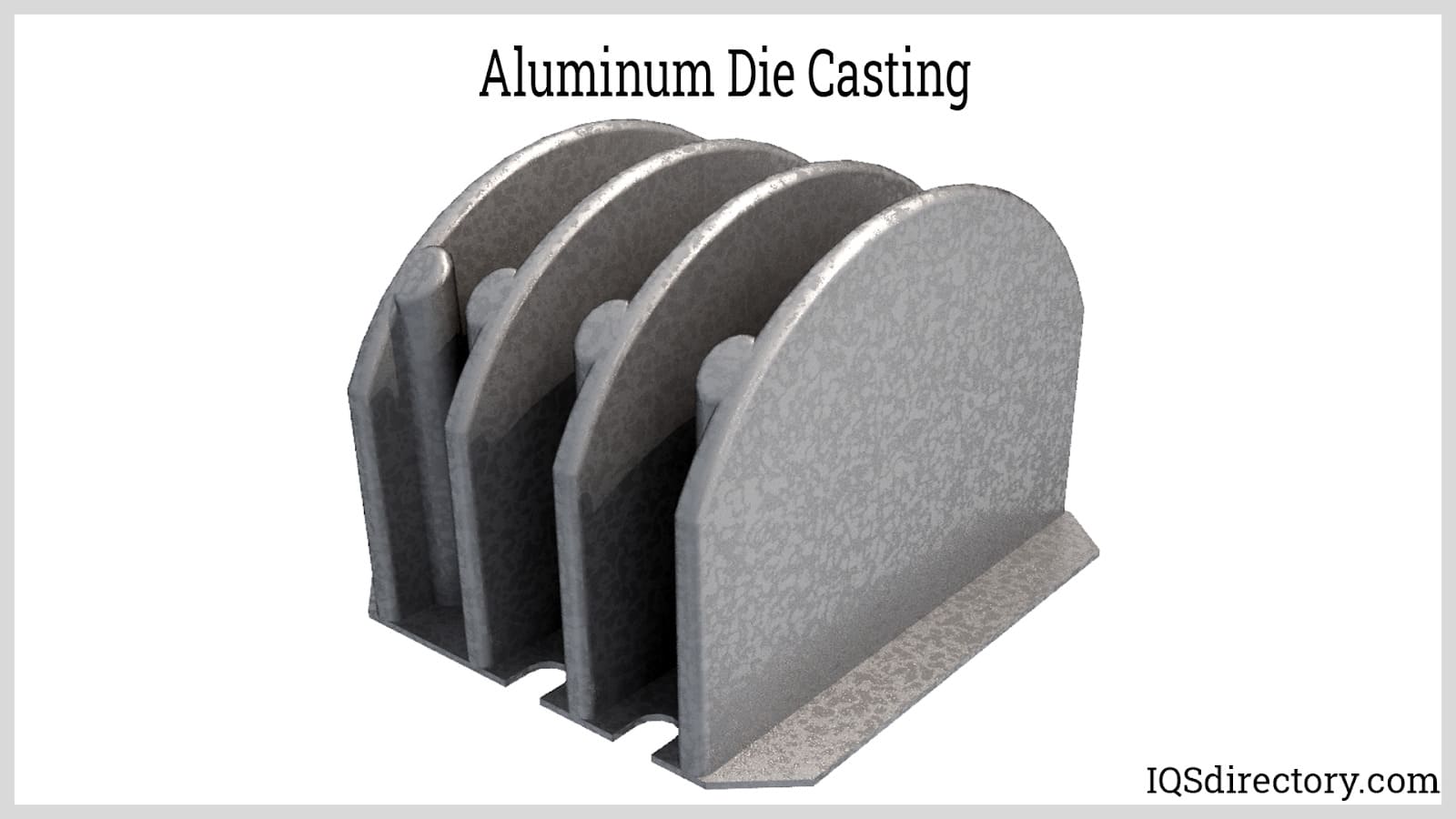Finding the Necessary Applications of Aluminum Castings Throughout Different Fields
Aluminum spreadings play a crucial duty in numerous sectors. Their resilient and light-weight attributes add to developments in automotive and aerospace markets. Furthermore, they enhance building honesty and customer product style. As sustainability ends up being a priority, the environmental benefits of aluminum castings further highlight their importance. Comprehending the extensive applications of this material can disclose insights right into modern production techniques. What certain developments are being made in these various industries?
Automotive Sector Innovations

Moreover, light weight aluminum castings play a crucial duty in electric cars, where weight decrease is extremely important for battery performance. With the combination of light weight aluminum in engine blocks, transmission housings, and architectural components, car manufacturers can achieve premium durability while maintaining peak efficiency. As the demand for sustainable and efficient vehicles expands, the auto industry remains to accept aluminum casting technologies, positioning itself at the center of technological advancements and environmental obligation.
Aerospace Advancements
While the aerospace sector constantly looks for ways to boost efficiency and efficiency, improvements in aluminum spreadings have become an important consider attaining these goals. The lightweight nature of light weight aluminum substantially adds to fuel effectiveness, lowering total aircraft weight without jeopardizing architectural stability. Advancements in casting methods, such as die casting and investment casting, permit elaborate designs that enhance the rules of aerodynamics and efficiency.
Innovations in metallurgy have improved the toughness and corrosion resistance of light weight aluminum alloys, making them appropriate for different aerospace applications, including engine elements and body structures. The ability to generate complex shapes lowers the variety of parts required, simplifying setting up procedures and reducing maintenance demands. As aerospace producers significantly turn to aluminum castings, they are discovering that these advancements not only drive functional performance but also sustain sustainability objectives via decreased power consumption throughout trip.
Construction Applications
Light weight aluminum castings play a pivotal duty in the construction sector, using a mix of stamina, durability, and lightweight properties that enhance architectural honesty. Metal Castings. These spreadings are made use of in a variety of applications, consisting of window structures, door frameworks, and roof, where their resistance to deterioration and weathering is specifically advantageous. Light weight aluminum spreadings contribute to energy performance, as their lightweight nature decreases the general tons on frameworks, facilitating easier transportation and setup.
Additionally, the versatility of aluminum enables complex geometries and detailed styles, conference visual requirements without jeopardizing architectural efficiency. In seismic regions, light weight aluminum castings can be utilized in critical structural elements, providing substantial benefits pertaining to adaptability and durability. Overall, using light weight aluminum castings in building and construction not only improves the efficiency of buildings but additionally sustains sustainable building practices by making it possible for using recyclable materials in building and construction tasks.

Consumer Product Production
In customer items manufacturing, light weight aluminum castings play a crucial role in light-weight product layout, permitting for less complicated handling and improved performance. Their boosted toughness attributes add to the long life and dependability of everyday items. This mix of advantages makes aluminum a preferred material in the affordable durable goods market.
Light-weight Item Style
As suppliers progressively prioritize performance and sustainability, lightweight item layout has arised as a critical facet of customer products development. The combination of light weight aluminum spreadings allows designers to create items that are not only lighter official statement however also more energy-efficient. This decrease in weight adds to lower transportation prices and improved customer experience, as consumers increasingly seek easier-to-handle products. In addition, lightweight designs help with cutting-edge aesthetics, making it possible for brand names to separate themselves in an open market. The convenience of aluminum allows for elaborate forms and types, improving total style liberty. As a result, light-weight product layout is ending up being crucial for firms intending to meet modern customer needs while sticking to ecological considerations. This pattern is reshaping just how items are conceptualized and produced across numerous sectors.
Boosted Resilience Attributes
While modern customers require products that are both light-weight and cosmetically pleasing, improved durability attributes have actually come to be equally important in consumer items manufacturing. Aluminum castings supply phenomenal strength-to-weight ratios, permitting producers to develop things that hold up against everyday damage. The fundamental deterioration resistance of light weight aluminum assurances that items keep their appearance and capability with time, lowering the demand for constant substitutes. In addition, casting strategies allow the manufacturing of seamless designs that boost structural stability. As an outcome, manufacturers can supply durable goods that not only satisfy efficiency expectations but additionally offer durability. This concentrate on longevity not just enhances consumer complete satisfaction yet additionally straightens with sustainability objectives by minimizing waste and promoting liable intake.
Electric and Electronics Sector
The electric and electronics sector significantly counts on aluminum castings for their light-weight, durable, and very conductive buildings. These spreadings are integral in manufacturing various parts, consisting of housings, rooms, and warm sinks. Their low thickness enables for decreased total weight in digital tools, boosting transportability without endangering efficiency. Additionally, aluminum's outstanding thermal conductivity is crucial for dissipating warm produced by electronic components, guaranteeing optimal working and durability.
Moreover, aluminum spreadings give superb deterioration resistance, which is essential for maintaining digital integrity in numerous settings. The ability to create complicated forms and complex styles with spreading strategies even more sustains innovation in product growth, permitting makers to fulfill certain technological requirements. As the demand for high-performance and energy-efficient electronic devices continues to expand, light weight aluminum castings are positioned as a Discover More key product, promoting innovations in modern technology throughout the field. Their versatility and reliability make them crucial in the contemporary electric and electronics landscape.
Sustainability and Environmental Effect
Recognizing the growing concern for environmental sustainability, the light weight aluminum casting market has made substantial strides in minimizing its environmental impact. The manufacturing of aluminum castings currently significantly uses recycled materials, lessening energy consumption and raw material removal. This change not just preserves resources yet also minimizes greenhouse gas exhausts connected with primary light weight aluminum manufacturing.
Additionally, developments in technology have led to extra reliable spreading processes, better decreasing waste and improving energy effectiveness. Numerous manufacturers are adopting sustainable methods such as closed-loop systems that reuse water and lower hazardous waste.
In addition, light weight aluminum's light-weight nature enhances gas efficiency in transportation markets, adding to reduced discharges over the lifecycle of cars. As the industry continues to focus on and introduce sustainability, light weight aluminum spreadings are poised to play an essential duty in promoting ecologically accountable techniques across different markets, lining up with global efforts to fight climate change and promote lasting growth.
Regularly Asked Inquiries
What Are the Conveniences of Light Weight Aluminum Castings Over Other Products?
Aluminum spreadings supply light-weight buildings, superb deterioration resistance, and great thermal conductivity. Additionally, they make it possible visit here for complex designs, reduce manufacturing costs, and provide boosted sturdiness, making them useful compared to traditional products like steel or iron.
How Are Aluminum Castings Produced?
Light weight aluminum spreadings are produced via processes like sand casting, pass away casting, and financial investment casting. Molten light weight aluminum is poured into mold and mildews, enabled to cool, and after that eliminated, leading to resilient and specific components for various applications.
What Is the Normal Life-span of Light Weight Aluminum Castings?
The common life-span of light weight aluminum castings varies in between 10 to half a century, depending upon ecological elements, use problems, and alloy make-up. Proper upkeep and treatment can considerably expand their toughness and performance in different applications.
Can Light Weight Aluminum Castings Be Reused?
Yes, light weight aluminum spreadings can be recycled effectively (Aluminum Foundry). The reusing process maintains the metal's residential or commercial properties, making it a lasting alternative for different applications, subsequently adding to environmental conservation and source administration within multiple industries
What Industries Are Emerging for Aluminum Spreading Applications?
Arising industries for aluminum casting applications consist of electrical car production, renewable resource industries, aerospace improvements, and medical innovation. These fields utilize aluminum's light-weight, long lasting homes to improve and innovate performance in different products and systems.
While the aerospace sector continually looks for means to improve performance and effectiveness, innovations in light weight aluminum castings have actually arised as an important factor in achieving these goals. Light weight aluminum spreadings play a critical duty in the building and construction sector, using a combination of toughness, longevity, and light-weight residential or commercial properties that enhance structural honesty. In customer products manufacturing, aluminum spreadings play a vital function in light-weight product design, permitting for simpler handling and improved efficiency. The electric and electronics field progressively relies on aluminum castings for their light-weight, resilient, and very conductive buildings. Light weight aluminum castings are generated with processes like sand spreading, pass away casting, and financial investment casting.